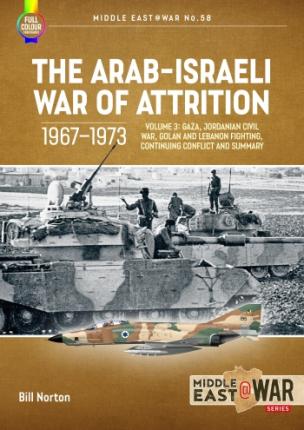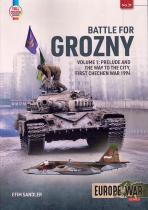The Arab-Israeli conflict persisted through two wars and ongoing border tensions. However, the Six-Day War of June 1967 was a cataclysm. Israel emerged victorious in a war with neighbouring Arab states and in possession of occupied territory. The Arabs were furious at this outcome and determined to regain their lands and dignity by again making war with Israel. Added to the mix was a resurgent Palestinian liberation movement. Renewed fighting began within weeks. It became a period of sustained combat, casualties, fiscal outlay, and diplomacy on the world stage unlike anything experienced previously. All involved militaries remained very active over these years with more consistent mobilisation, intensive training, and action than ever before. Each side deepened their dependence on superpower arms supply. The geopolitical stakes rose and Israel found itself fighting the Soviets indirectly on the borders and terrorist internationally. Adversary forces grew in size, adopted more complex weapons, and trained in new tactics, all in the tumult of combat of escalating intensity. The air forces of especially Israel and Egypt, then Syria, became especially active, growing in size and capabilities. They employed some of the most advanced weapons the USA and the USSR arrayed in their Cold War confrontation. The extent of the air war grew to extensive air defences and long-range bombing plus deep photo reconnaissance. The danger of this sparking another general war with potential superpower involvement was high. This period is collectively referred to as the War of Attrition.
The named War of Attrition on the Suez Canal began on 8 March1969 and ended with a cease fire 17 months later. However, combat beyond this area began even before this period and extended beyond.
Volume 3 focuses initially on the fighting across the Jordan River. This eventually led to a civil war in Jordan and battles between Jordanian and Syrian armoured forces. Syria began more actively challenging Israeli occupation of the Golan Heights in summer 1970and this grew over the next two years to almost periodic combat of increasing severity. The border with Lebanon also heated up with Palestinian attacks and Israeli responses that included a growing number of cross-border incursions and bombing. This brought Syrian reactions and pushed Lebanon towards anarchy. Tensions persisted on the southern front and the Palestinians took their struggle outside the region with a campaign of international terrorism. Both Egypt and Syria prepared to launch a war to liberate their occupied territories with little warning.
It was an extraordinary time of confrontation, irregular warfare, rising terrorism, and national struggles seldom seen before or since. It became the world’s most violent, costly, and dangerous conflict after that in Southeast Asia. At the centre of it, Israel found herself engaged on all sides and isolated as never before. The struggle altered the geopolitical landscape and set the stage for the October1973 war. Richly illustrated with photographs, maps, charts and tables, the reader will find new details and correction of previously published ‘facts.’ This is the most focused and clear account of these Arab-Israeli confrontation events.









